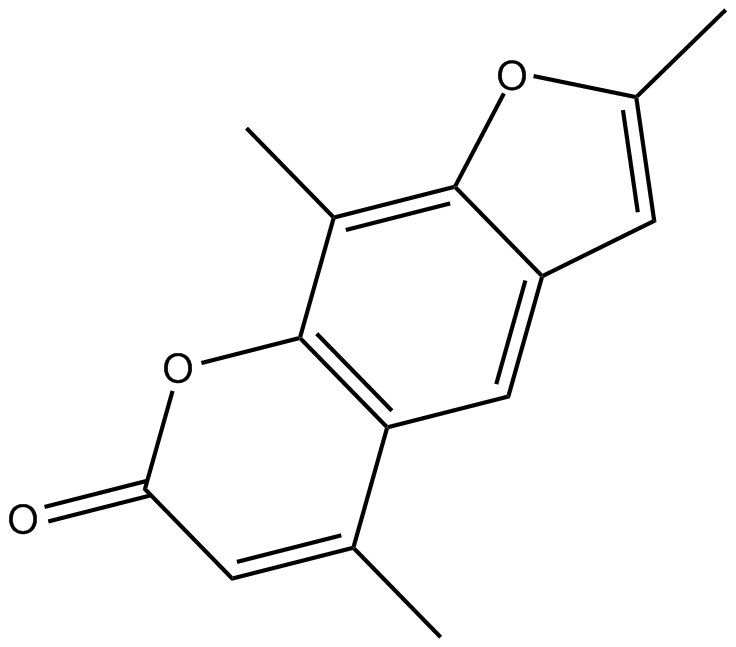Trioxsalen (Synonyms: NSC 71047,4,5’,8-Trimethylpsoralen,Trisoralen) |
| Catalog No.GC15043 |
intercalates into DNA and forms DNA single-strand adducts and interstrand crosslinks when activated with ultraviolet light
Products are for research use only. Not for human use. We do not sell to patients.

Cas No.: 3902-71-4
Sample solution is provided at 25 µL, 10mM.
Trioxsalen has been reported to intercalate into DNA forming DNA single-strand adducts and interstrand crosslinks when activated with UV light.
In vitro: Trioxsalen (trimethylpsoralen, trioxysalen or trisoralen) is a furanocoumarin and a psoralen derivative. It is obtained from several plants, mainly Psoralea corylifolia. Like other psoralens it causes photosensitization of the skin. After photoactivation it creates interstrand cross-links in DNA, which can cause programmed cell death unless repaired by cellular mechanisms. In research it can be conjugated to dyes for confocal microscopy and used to visualize sites of DNA damage [1].
In vivo: Mice received 3H-trioxsalen either orally or intraperitoneally. It was found that over 88% of trioxsalen, after po or i.p. administration, was excreted in the urine within 8 hours and over 90% within 12 hours. The distribution patterns of trioxsalen radioactivity demonstrated that trioxsalen was selectively present in liver, skin, and blood and was barely detectable in other organs. The highest values were observed between 2 and 6 hours and diminished rapidly thereafter [1].
Clinical trial: In men receiving 40 mg unlabelled trioxsalen, 80% of the administered dose was excreted in urine within 8 hours as hydroxylated or glucuronide derivatives. It was also reported that trioxsalen transformed to a principal metabolite 5'-carboxy-4,8-dimethylpsoralen, which was found to be inactive as skin photosensitizer and to this transformation had been attributed the difference in the photoreactivity of trioxsalen when topically applied or systematically administered [1].
Reference:
[1] Mahmoud M. A. Hassan. Trioxsalen. Analytical Profiles of Drug Substances Volume 10, 1981, Pages 705-727.
Average Rating: 5 (Based on Reviews and 7 reference(s) in Google Scholar.)
GLPBIO products are for RESEARCH USE ONLY. Please make sure your review or question is research based.
Required fields are marked with *




















